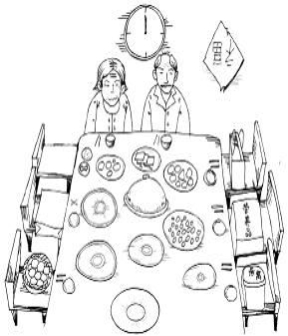题目内容
It’s so difficult to follow the ups and downs of a 2-year-old. One moment he’s beaming and friendly; the next he’s sullen(愠怒的)and weepy, often for no apparent reason. These mood swings, however, are just part of growing up. They are signs of the emotional changes taking place as your child struggles to take control of actions, impulses, feelings and his body.
At this age, your child wants to explore the world and seek adventure. As a result, he’ll spend most of his time testing limits, his own, yours and his environments. Unfortunately, he still lacks many of the skills required for the safe accomplishment of everything he needs to do, and he often will need you to protect him.
When he oversteps a limit and is pulled back, he often reacts with anger and frustration, possibly with a temper tantrum (发脾气). He may even strike back by hitting, biting and kicking. At this age, he doesn’t have much control over his emotional impulse (冲动). So his anger and frustration tend to erupt suddenly in the form of crying, hitting or screaming. It’s his only way of dealing with the difficult realities of life. He may even act out in ways that unintentionally harm himself or others. It’s all part of being 2.
It’s not uncommon for toddlers to be angels when you’re not around, because they don’t trust people enough to test their limits. But with you, your toddler will be willing to try things that may be dangerous or difficult, because he knows you’ll rescue him if he gets into trouble.
Whatever protest pattern he has developed around the end of his first year will probably persist for some time. For instance, when you’re about to leave him with a sitter, he may become angry and throw a tantrum in anticipation (预想) of the separation. Or he may cry and cling to you. Or he could simply become subdued and silent. Whatever his behavior, try not to overreact by scolding or punishing him. The best tactic(策略) is to reassure him before you leave that you will be back and, when you return, to praise him for being so patient while you are gone. Take comfort in the fact that separations should be much easier by the time he’s 3 years old.
1.The “ups and downs” (Para. 1) of a 2-year-old refers to ________.
A. his falling down and standing up
B. his successes and failures in doing things
C. his good and bad traits
D. his mood swings
2.A 2-year-old still lacks all of the following EXCEPT _____________.
A. signs that express his emotional changes
B. skills necessary for accomplishing certain things
C. control over his emotional impulses
D. good methods of dealing with the difficult realities of life
3.Which of the following is true?
A. A 2-year-old doesn’t know how to express his anger and frustration.
B. A 2-year-old often intentionally harms himself or others.
C. A 2-year-old depends on his parents to do everything new and challenging.
D. A 2-year-old trusts his parents more than other people
4.When a mother is about to separate with her baby, she’d better __________.
A. leave without the baby’s knowledge
B. make the baby subdued and silent
C. comfort the baby that she’ll be back soon
D. ignore the baby’s reactions


